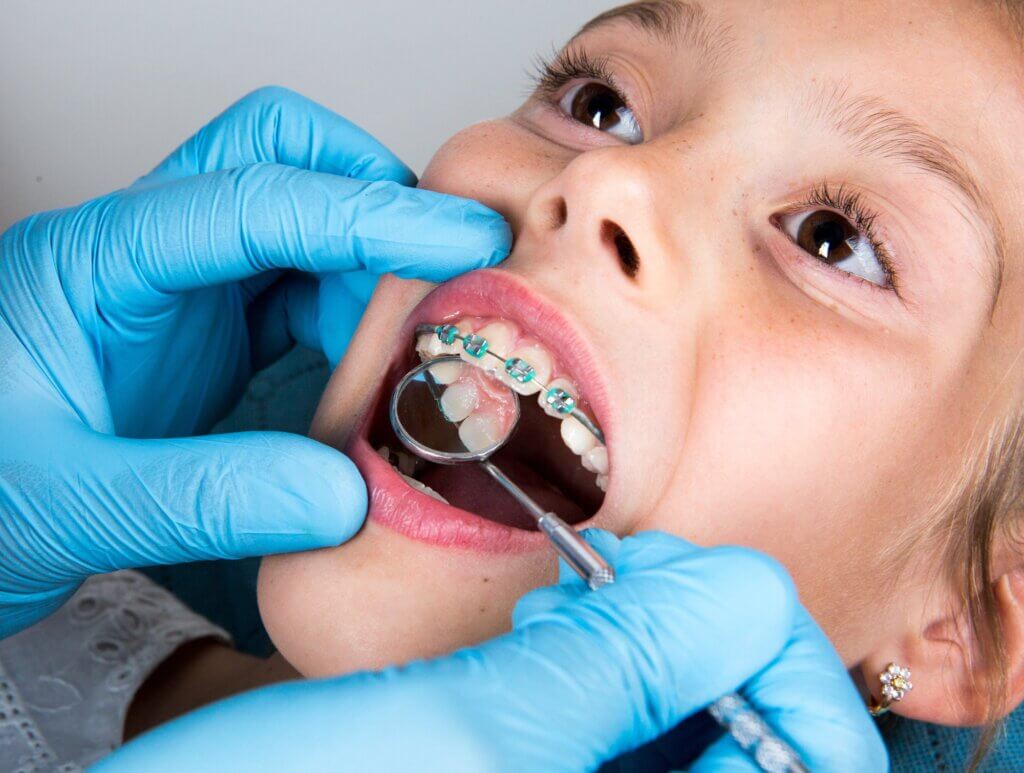
Considering early orthodontic treatment for your children? It’s a smart move. Early orthodontic treatment simply means getting ahead of potential tooth and jaw alignment issues before they become major problems.
In this blog, we’re sharing nine clear benefits of choosing this path for your child’s dental health. From preventing serious orthodontic issues to boosting their confidence with a straighter smile. You’ll see why starting early is the way to go.
1. Prevention of Severe Orthodontic Problems
Getting ahead of orthodontic issues early on can save your child from bigger troubles down the road. Think of it like catching a small leak in your roof before it turns into a major flood. By addressing concerns like crooked teeth or misaligned jaws early, you’re preventing them from snowballing into more serious problems later.
Just like with any aspect of health, catching problems early often means they’re easier to manage. With orthodontic issues, this might mean correcting minor misalignments or guiding jaw growth while your child is still young and their bones are more malleable.
2. Improved Oral Health
Taking care of your child’s teeth isn’t just about brushing and flossing. Early orthodontic treatment can actually set them up for better oral health in the long run. Straightening out crooked teeth and aligning their bite makes brushing and cleaning easier. It also reduces the risk of cavities and gum disease.
Misaligned teeth or a faulty bite can create areas where food particles become trapped. This increases the risk of decay and gum inflammation. Correcting these issues early through orthodontic treatment helps to eliminate these problematic areas, promoting better oral health outcomes.
3. Enhanced Self-Esteem
Straightened early on can do wonders for your child’s self-esteem. Children with straight teeth are often more willing to smile and engage in social activities without feeling self-conscious. They may be more comfortable meeting new people, participating in group activities, and speaking in public settings.
Unfortunately, children with noticeable teeth issues often become targets for teasing or bullying by their peers. Early orthodontic treatment can help address these issues before they become a source of social stress or embarrassment.
4. Better Jaw Development
Proper jaw development ensures that your child’s upper and lower jaws fit together correctly, leading to a well-aligned bite. When the jaws are misaligned, it can result in issues like:
- Overbites: when the upper front teeth overlap significantly with the lower front teeth vertically
- Underbites: when the lower front teeth protrude past the upper front teeth horizontally
- Crossbites: when the upper teeth sit inside the lower teeth when the jaw is closed
These can all affect their ability to chew properly and may even cause discomfort. The jaw also influences speech production. Proper jaw alignment allows for clear articulation of sounds and ensures that your child’s speech develops without impediments. Conversely, jaw misalignment can contribute to speech difficulties such as lisps or slurred speech.
5. More Effective Treatment
Addressing orthodontic issues early often means simpler treatment procedures. This means using orthodontic appliances that are less invasive or require less time to achieve the desired results.
Take palate expanders or removable retainers for example. These appliances can be easily adjusted or removed as needed. Making them less intrusive for your child compared to traditional braces.
6. Minimized Need for Extractions
When overcrowding or misalignment are left unaddressed, teeth removal is often needed to resolve. However, early treatment aims to intercept these problems, often eliminating the need for extractions altogether.
Tooth extractions can lead to bone loss in the jaw over time. This can affect facial structure and contribute to a prematurely aged appearance. Therefore, keeping all permanent teeth intact contributes to better oral health in the long term.
7. Prevention of Speech Problems
During childhood, speech patterns are still developing. Misaligned teeth or jaws can interfere with the tongue’s movement and airflow, leading to speech difficulties. Clear speech is essential for
- Academic success
- Professional development
- Overall social well-being throughout their lives
Investing in early orthodontic care can improve your child’s current speech while setting them up for better communication skills in the future.
8. Guidance for Permanent Teeth
During childhood, the jaw is still growing, and there is space available for permanent teeth to come in. However, if there are issues with the alignment of primary (baby) teeth or jaw structure, it can affect the positioning of permanent teeth as they emerge.
By guiding the eruption of permanent teeth into their proper positions, early treatment helps ensure that the teeth come in straight and aligned.
9. Decreased Dental Anxiety
Students show that 50% of us develop dental anxiety during childhood. Addressing orthodontic issues early allows for treatment to coincide with natural jaw growth. This can lead to a smoother treatment process as the dentist can work in harmony with the natural growth of the jaw. Minimizing discomfort caused by the pressure of misaligned teeth or jaws.
Early intervention can also result in shorter treatment times when compared to waiting until adolescence or adulthood. A shorter treatment duration means less time spent wearing orthodontic appliances, which can translate to reduced discomfort throughout treatment.
What to Expect During Early Orthodontic Treatment
When it comes to early orthodontic treatment, the emphasis is on personalized care tailored to your child’s unique dental needs. Here’s a bit more detail about what that entails:
- Comprehensive Assessment: Your child’s orthodontic journey begins with the orthodontist examining their teeth, jaws, and overall dental development to identify potential issues or areas of concern
- Customized Treatment Plan: Based on the assessment findings, the orthodontist will develop a customized treatment plan that may involve braces, clear aligners, or other appliances, depending on the nature and severity of the issues identified
- Guidance and Support: Throughout the treatment process, your child’s orthodontist will monitor their progress closely, make any necessary adjustments to the treatment plan, and address any concerns or questions you may have along the way
Get a Head Start on Your Child’s Dental Health
As you consider the benefits of early orthodontic treatment for your child, remember that the journey is made smoother with the right orthodontic practice by your side.
At Wardlaw Orthodontics, we prioritize building strong relationships with everyone who walks through our doors. Contact us today to schedule a consultation and experience the difference that sets us apart.
